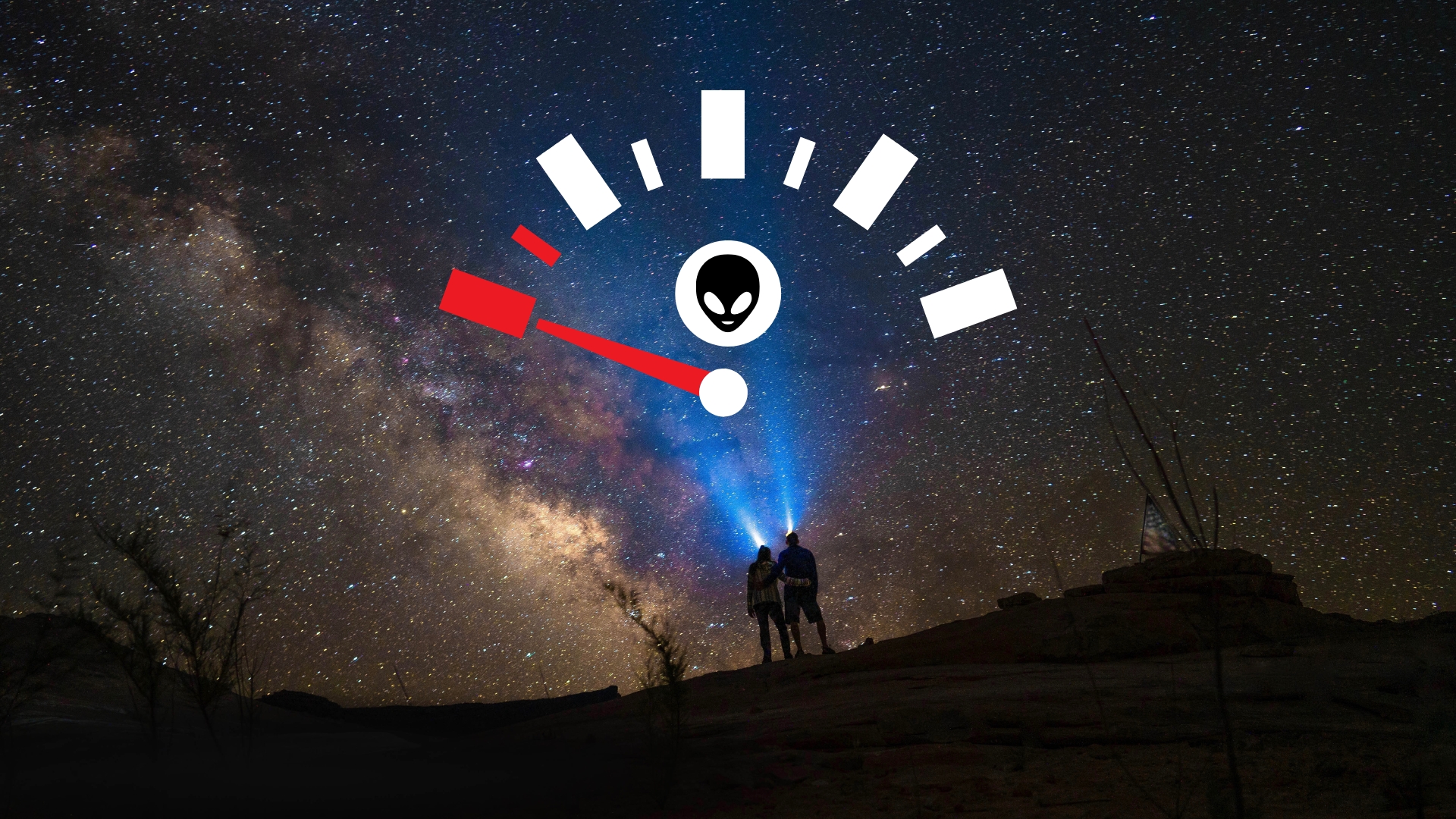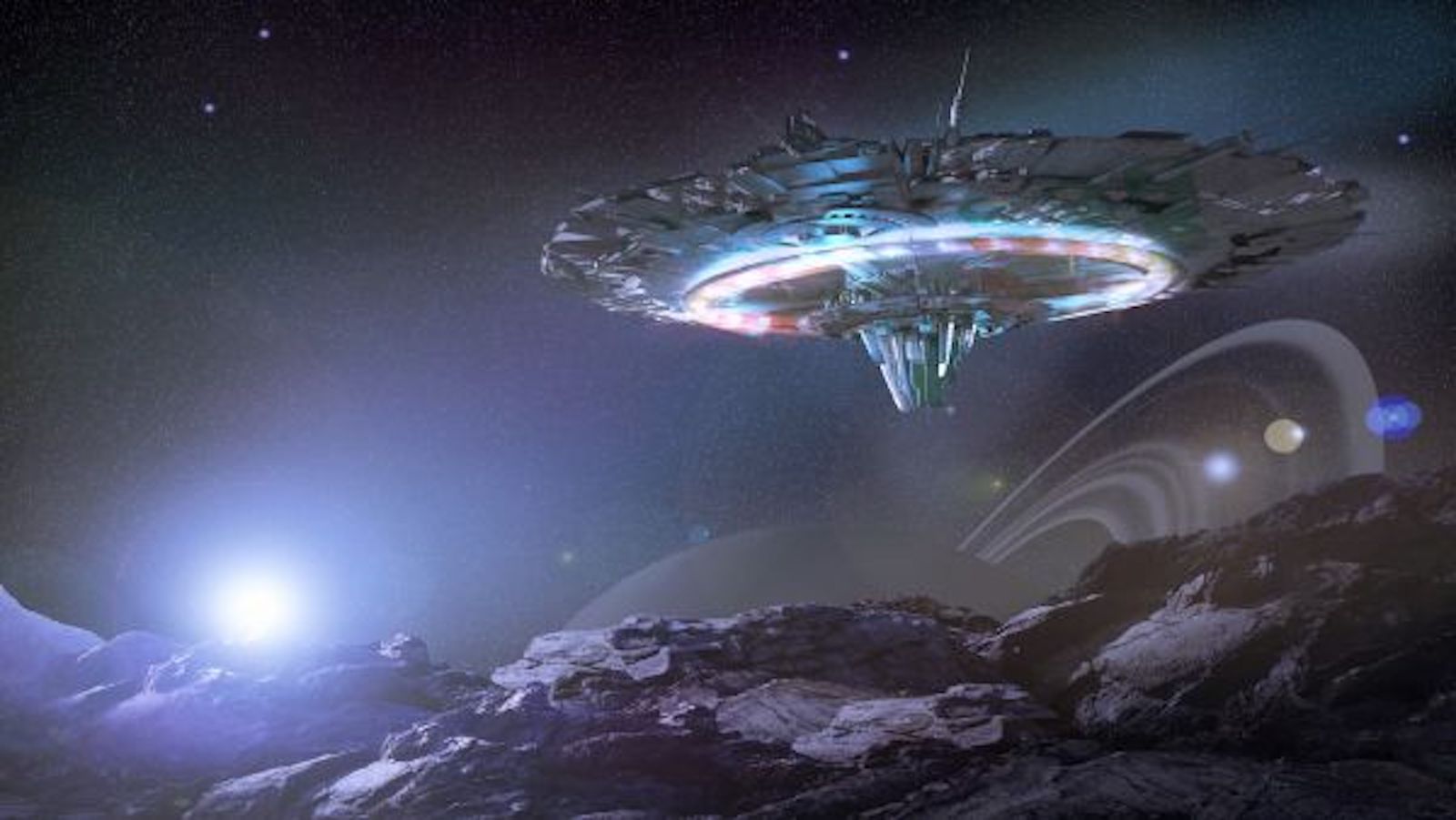The Fermi Paradox: Where are all the aliens?
Discover the Fermi Paradox — why, in a vast universe full of stars and planets, haven't we found extraterrestrial life? Explore the theories behind this great mystery.

The universe is vast, ancient, and teeming with billions of potentially habitable planets.
With so many chances for intelligent life to arise, we should expect to see evidence of extraterrestrials.
Yet, despite decades of searching, the cosmos remains eerily silent. This contradiction is known as the Fermi Paradox, first proposed by physicist Enrico Fermi in 1950.
Fermi Paradox FAQs
Was the Fermi Paradox solved?
Humanity has been around for just 200,000 years, and we've been listening for possible radio signals from E.T. just since 1960. So the odds that we will overlap in time and space with a detectable alien civilization don't seem great. There is probably no single solution to the Fermi Paradox
What is the great silence theory?
The "great silence" is the idea that there is no evidence of extraterrestrial civilizations and that we are truly alone in the universe; it is also known as the Fermi Paradox.

Is the dark forest theory true?
While some intelligent extraterrestrial civilizations might choose to remain hidden, as suggested by the dark forest theory, it’s unlikely that every single one would adopt the same fear-driven strategy.
The scale of the paradox

The numbers are staggering. Our Milky Way alone contains an estimated 100 to 400 billion stars, many of them hosting planets in the habitable zone. If even a tiny fraction of these planets develop life, and a fraction of those develop intelligence and technology, the galaxy should be buzzing with signals, megastructures, or even interstellar visitors. But so far, we’ve found nothing.
"Fermi grasped that any civilization with a modest amount of rocket technology and an immodest amount of imperial incentive could rapidly colonize the entire galaxy," representatives of the Search For Extraterrestrial Intelligence (SETI) Institute in Mountain View, California, wrote in a Fermi Paradox explainer. "Within a few tens of millions of years, every star system could be brought under the wing of empire. Tens of millions of years may sound like a long project, but in fact it’s quite short compared to the age of the galaxy, which is roughly a thousand times more."
Possible explanations

There are numerous hypotheses attempting to resolve the paradox, ranging from the optimistic to the ominous:
1. They're out there, but we haven't found them yet
Radio Silence: We might not be listening at the right frequencies or in the right way. Civilizations could communicate using methods we haven’t discovered yet, like neutrino beams or quantum entanglement.
Breaking space news, the latest updates on rocket launches, skywatching events and more!
The Cosmic Timescale: Humanity has only been scanning the skies for a few decades — an eye blink in cosmic history. Advanced civilizations could rise and fall in cycles, missing each other in time.
2. They don't want to be found
The Zoo Hypothesis: Aliens could be observing us like we observe animals in a nature reserve, choosing not to interfere.
The Dark Forest Theory: Inspired by Liu Cixin’s sci-fi novel The Dark Forest, this idea suggests that intelligent species stay silent to avoid detection by potentially hostile civilizations.
3. Something prevents their expansion
The Great Filter: This theory suggests that there is a nearly insurmountable barrier preventing civilizations from advancing. This could be at the stage of life’s emergence, intelligent life’s development, or a self-destructive phase like nuclear war or environmental collapse.
Self-Limiting Civilizations: Advanced societies may become so technologically sophisticated that they lose interest in space expansion, opting for virtual realities or inward development.
Implications for humanity

Understanding the Fermi Paradox is more than just an intellectual exercise — it has real implications for our future. If the Great Filter lies behind us (e.g., life itself is incredibly rare), then we may be one of the first intelligent civilizations. If the filter is ahead (e.g., technological civilizations inevitably destroy themselves), then our survival is far from guaranteed.
Our search for extraterrestrial intelligence (SETI) continues, with new projects like the James Webb Space Telescope analyzing exoplanet atmospheres and advanced AI scanning for signals. Whether we find aliens or confirm our solitude, the answer to the Fermi Paradox will profoundly shape our understanding of our place in the universe.
The "great silence" of the cosmos may be unsettling, but it also presents one of the greatest mysteries of our time. Are we alone, or is something preventing us from hearing the others? Until we find an answer, the question remains open.
Fermi paradox expert Q&A
We asked Professor Heidi Jo Newberg from the Rensselaer Polytechnic Institute a few questions about the Fermi Paradox.

Heidi Jo Newberg is an astrophysicist currently studying the structure of our galaxy. She has conducted diverse research in astrophysics, including on stars, supernovas, and both our galaxies and others. She recently received a grant from NASA to work on an alternative to conventional telescopes to detect exoplanets that could support life.
Do modern researchers tend to accept the premise of the Fermi Paradox — that is, if intelligent life outside our planet exists, then it's likely that they would have contacted or reached Earth by now?
I can't speak for everyone else, but no I do not believe in the premise. Because the Earth is the only planet where we know that life exists, we can only make guesses based on how life here has evolved.
The Earth formed about 4.6 billion years ago. Life on Earth began at least 3.5 billion years ago, since fossils of this age have been found, but simpler cells are expected to have formed earlier than that. Possibly, life on Earth started very quickly after conditions allowed for liquid water to be commonly available. On the other hand, life that had more than one cell took until about 1 billion years ago, and humans did not evolve in 0.2 billion years ago. As far as we know, humans are the only life form on the Earth that thinks about what is going on in the Universe, and could potentially communicate with other life. The first telescopes were invented about 400 years ago, and the first space probes were launched less than 100 years ago.
What I take away from this is that simple life (like one celled organisms) might be easy to create, but complex life is harder, and life that tries to communicate with life elsewhere in the Universe could be extremely rare. While the technology to find and communicate with extraterrestrial life, once started, appears to develop extremely fast on the timeline of the Universe, we do not know how long modern humans will survive as a species.
Is there a commonly accepted way to resolve the Fermi Paradox?
I doubt there is a commonly accepted way to resolve the Fermi Paradox, other than to point to the fact that we have very little information about highly evolved intelligent life. We don't know how rare it is, how long a civilization lasts, how likely it would or would not want to communicate with us, how likely it would spread through the Galaxy, or how we would recognize and understand each other. In the absence of any real information to figure any of this out, it just seems like there are many possibilities to solve it.
In evaluating the Fermi Paradox, it is important to think about the vast distances of space in the Milky Way. The time for light to travel to the nearest star is more than four years. If a rocket ship travels 20,000 miles per hour, then it would take more than 33,000 years to get there. The light travel time from the Sun to the center of our galaxy is 30,000 years. The rocket travel time is a 170 million years. It is completely unclear whether life will want to, or be able to, travel over these sorts of distances to populate the Galaxy. If it is attempted, it is not clear whether there are suitable places for it to land and thrive. Spreading life throughout the galaxy might be much more difficult than Fermi supposed.
Do researchers studying exoplanets, particularly potentially habitable ones, usually consider the Fermi Paradox?
Modern researchers looking for potentially habitable planets usually use the Seager Equation when they are thinking about the likelihood of finding life. This is an update of the Drake Equation which was a summary of what people were looking for in 1961. Note that one of the key differences is that the Seager Equation asks how many planets we can find with life that transformed the atmosphere (for example by photosynthesis), while the Drake Equation calculates the number of civilizations that are sending out detectable radio waves. In the 20th century, the SETI program looked for these civilizations and found no signals of such civilizations.
So you can see that the conversation has changed to the search for life that is not necessarily intelligent — something that the Earth's history would tell us is much more likely to find. I occasionally teach an Exoplanets and Life class, and the textbook I use does not talk about the Fermi Paradox. My expectation is that most researchers are not currently thinking about it. The current search is for exoplanets, habitable exoplanets with liquid water, and signs of life that is not necessarily intelligent.
What are some ways current research might eventually resolve the Fermi Paradox?
As we learn more about exoplanets, it becomes more possible to make statistical statements about the likelihood of life, and the possibility for it to spread. The basis of the paradox lies in the idea that there are hundreds of billions of stars in the Milky Way, and with so many there must be other intelligent life on one of them. But we don't really have a way to assess whether that is true.
In six tons of sand, there are hundreds of billions of grains of sand. So, it might seems reasonable to think that there must be at least one of them that is made of uranium. But we don't look for uranium on the beach because if it was there, it would be dissolved in the water and wash away. Just having a large number of objects doesn't mean that every possibility for what those objects are must therefore exist.
Current experiments are teaching us how many exoplanets there are, what the conditions are on those planets, how common it is for exoplanets to have surface temperatures that allow for liquid water, and possibly how many exoplanets exhibit atmospheric abundances that favor the existence of life. We are working towards actually finding other life of any kind that is on another planet. This information would give us some basis for then extrapolating to the probability that technological civilizations form elsewhere, and would tell us how far they might have to travel to find the nearest habitable planet where they could establish a colony.
Additional resources
If you're looking to explore the Fermi Paradox in depth, a great starting point is Stephen Webb’s book, "If the Universe Is Teeming with Aliens… Where Is Everybody?" This book lays out 75 possible solutions to the paradox, covering scientific, philosophical, and speculative ideas in an accessible yet detailed way. For an engaging online read, the Wait But Why article on the Fermi Paradox is a great place to start. Additionally, the SETI Institute’s website provides up-to-date research, news, and expert insights on the search for extraterrestrial intelligence, including discussions on why we might not have found aliens yet.
Bibliography
“The Fermi Paradox.” SETI Institute, https://www.seti.org/fermi-paradox-0. Accessed 5 March 2025.
“The Fermi Paradox - Higgs Centre for Theoretical Physics.” The Higgs Centre for Theoretical Physics, https://higgs.ph.ed.ac.uk/outreach/higgshalloween-2021/fermi-paradox. Accessed 5 March 2025.
“Fermi's Paradox.” University of Oregon, https://pages.uoregon.edu/jschombe/cosmo/lectures/lec28.html. Accessed 5 March 2025.

Daisy Dobrijevic joined Space.com in February 2022 having previously worked for our sister publication All About Space magazine as a staff writer. Before joining us, Daisy completed an editorial internship with the BBC Sky at Night Magazine and worked at the National Space Centre in Leicester, U.K., where she enjoyed communicating space science to the public. In 2021, Daisy completed a PhD in plant physiology and also holds a Master's in Environmental Science, she is currently based in Nottingham, U.K. Daisy is passionate about all things space, with a penchant for solar activity and space weather. She has a strong interest in astrotourism and loves nothing more than a good northern lights chase!
You must confirm your public display name before commenting
Please logout and then login again, you will then be prompted to enter your display name.
